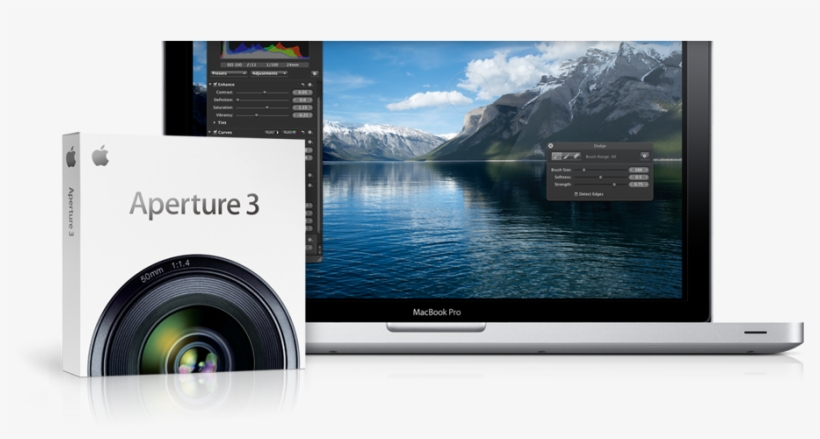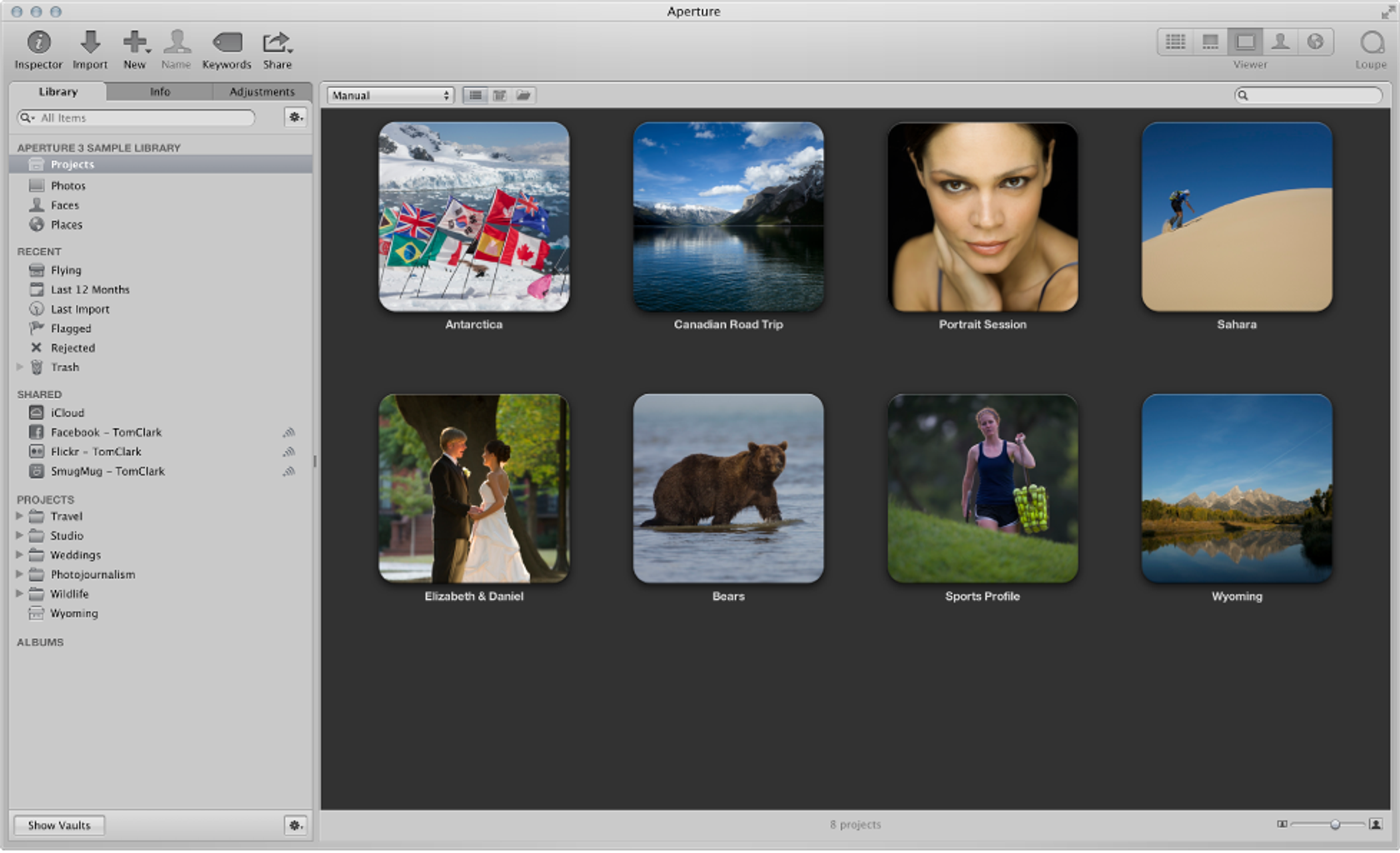Aperture is no longer sold from the App Store, because Apple stopped the development. Aperture 3.6 is required for MacOS 10.10.3 or newer versions of macOS X. It is not possible to upgrade to this version on an older system.
You can try to upgrade to Aperture 3.6, if you are running MacOS 10.10.3 or newer by reinstalling Aperture. This will work, if Aperture is showing in your purchase history at the AppStore, see: https://discussions.apple.com/docs/DOC-8402
Stay informed of new business and student offers. Speak with our friendly, certified experts. Get a free quote or learn about bulk licensing incentives. Easily download, manage and Apple Aperture 3 Information assign software to multiple systems. Call us today Apple Aperture 3 Information to learn more. Step 1: Download the Retroactive app. The Retroactive app can modify Aperture, iPhoto, or iTunes to run on macOS Big Sur and macOS Catalina. Retroactive will automatically scan your Mac to. Online Download Apple Aperture 3, The Adobe Photoshop Lightroom 4 Book For Digital Photographers Crack (All Language Packs), Autocad 2014 For Sale, Adobe Mudbox Download.
Which system are you running? Even Aperture 3.6 does not support the new RAW Support that has been released after the Digital Camera RAW Compatibility Update 6.17, that came out on El Capitan. But your Camera is already supported by Digital Camera RAW Compatibility Update 6.01, that has been released with Yosemite, Digital camera RAW formats supported by OS X Yosemite - Apple Support
So upgrading to El Capitan or Yosemite should give you the RAW support you need. But you can only update Aperture to 3.6, if you are running a system that is compatible with Aperture 3,6.
Jun 30, 2018 2:01 AM
Shortcuts To Installation/Execution Instructions
Table of Contents
- System Requirements
APT Packages
Basic Installation and Execution Instructions
Troubleshooting Your Installation
Changing APT’s GUI Size
System Requirements
Aperture Photometry Tool (APT) is an all-Java software implementation. There are no software dependencies on other astronomical packages or libraries. However, you will need to have a recent version of the Java Runtime Environment (JRE) installed on your machine. This version of APT was compiled with JDK 1.6.0_65 (Java Development Kit).
APT can be installed and run on any computer with the JRE installed (or JDK, which includes the JRE). This includes, but is not limited to, machines running Mac, Windows, Linux, and Solaris operating systems. The minimum memory requirement is probably less than 500 MBytes. APT’s basic functions can be utilized on machines with relatively small memories to analyze portions of very large images, which is effected by setting the maximum image size under APT’s preferences menu to as little as 500 pixels on a side.
APT can be installed as a double-clickable application or can be executed from the command line. The former is particularly easy for Windows and Mac machines. In order to do the latter, the java command must be in the system’s path. To determine whether this is the case, type the following command in a terminal window:
You should see a response like

The 64-bit JVM (Java Virtual Machine) is preferred for APT, and the 32-bit JVM will have issues if the java command is executed with the -Xmx option that exceeds the addressable memory of the JVM.
APT Packages

The appropriate APT package must be for the target machine. The *.tar.gz package can be installed on all machines (but the *.zip package is more convenient for Windows machines), and is suitable for users running APT from a command window, but a slightly more complicated installation procedure must be followed in this case. Most users will want to install APT as a double-clickable application, however. In this case, the *.zip package for Windows machines or the appropriate *.dmg package for Macs should be downloaded.
Basic Installation and Execution Instructions
APT packages can be downloaded from here.
Windows Machines
The easiest way to install and execute APT on a Windows machine is as follows:
- Download the *.zip file.
- Unzip the file to a sensible location of your choice, perhaps the Desktop.
- Bring up a Windows Explorer window, navigate to the installed
location, and double-click on the APT.exe Application file (which has the red and green APT logo as its icon).
A shortcut to APT.exe can be created and placed on the Windows Desktop for convenient access. Simply mouse-click on APT.exe with the right mouse button and choose “Create Shortcut”, and then drag the resulting “Shortcut to APT.exe” file to the Windows Desktop.
Please be careful to not double-click on either APT.jar or APT.bat. The former will launch APT, but insufficient memory will be allocated for large images. The latter will launch APT properly, but only if the Java bin directory is in the path of the operating system.
Macs
Apple Legacy Java 6 is required if you wish to run APT as a double-click application. Higher versions of Java are allowed, but in this case you must run APT from the command line via APT.csh in a terminal window (follow Linux instructions below).
Assuming you have Apple Legacy Java 6 installed, the easiest way to install and execute APT on a Mac is as follows:
Download Apple Aperture Software
- Download the appropriate *.dmg file.
- Double-click on the *.dmg if the Mac does not automatically open it.
- Drag the “Aperture Photometry Tool.app” application to the /Applications folder.
- In the Mac’s Finder tool, navigate to the /Applications folder, and double-click on the “Aperture Photometry Tool.app” application.
APT can be placed on the Mac’s dock for convenient access. Simply drag the APT folder from the /Applications directory over to the dock and hover to allow time for the existing dock icons to “make room” for APT.
Linux, Solaris, and Other Machines
This section illustrates a general procedure for installing APT on computers with UNIX-like operating systems, including Macs, that meet the above system requirements (and even Windows machines, although advanced knowledge of Windows is required, including using batch files, setting environment variables, executing DOS commands from a Command-Prompt window, possibly using the DOS edit command to edit the APT.bat file). The following basic steps are involved (and more details are given afterwards):
- Download and uncompress the *.tar.gz file.
- Copy the file to an installation directory, like ~/Applications in the example below (the ~ symbol means the user’s home directory).
- Extract the contents of the *.tar file after uncompression.
- Set environment variables according to the details of the installation.
- Execute the appropriate script to launch APT (APT.csh for UNIX-like operating systems or APT.bat for Windows machines).
Note: it has been reported that Chrome gunzips the *.tar.gz file, but does not remove the “.gz” suffix from the filename, so you may have to manually rename the *.tar.gz file to *.tar. Alternatively, use Firefox instead to download the *.tar.gz file.
Installation instructions (and uninstalling previous version of APT):
Now, you need to set up your environment. If your default shell is bash, add these lines to your ~/.bash_profile file (or change from 2.8.3 to 2.8.4 if you installed the previous version of APT):
Special note: If your machine is running Ubuntu Linux, then consider adding the above lines to ~/.profile instead of ~/bash_profile.
If your default shell is csh or tcsh, add the following lines to your ~/.cshrc file (or change from 2.8.3 to 2.8.4 if you installed the previous version of APT):
Execution instructions:
Apple Aperture Download For Windows
- Bring up a new terminal window.
- Change to a working directory.
- Execute the following command in the new terminal window:
Troubleshooting Your Installation
If APT does not work as a double-click application on your Mac or Windows machine, you can try launching APT from a terminal window. To do this, open a terminal window, change to the directory where the APT.jar is located, and execute the following command:
Download Apple Aperture 3.6
The language and region requirements should be set as above (“en” and “US”, respectively), regardless of the global location of the user, in order to ensure correct handling of floating-point numbers with decimal points as opposed to commas. The -Xmx1024M option allocates memory for large images, and can be set to larger values, such as 2048 or 4096, provided that the java command is running a 64-bit Java Virtual Machine. Error messages, if any, will be printed in the terminal window.
This java command can be incorporated into a custom shell script for the routine launching of APT where precise control of the java-command options used to invoke APT is needed. For example, the use may want to create a custom bash script to launch APT. The java command can be further customized by the user to include the pathname to APT.jar, either explicitly or as an environment-variable setting.

Changing APT’s GUI Size
APT has the option of displaying a slightly smaller-sized GUI. This option may be suitable for laptops with smaller screens. While the default GUI size is 1390 x 835 pixels, the compact-GUI size is 1220 x 800 pixels. The setting of environment variable APT_COMPACT=1 before executing APT will give the smaller GUI, and APT_COMPACT=0 or no setting will give the larger GUI. If you are happy with the larger-sized GUI, then you need not bother to set APT_COMPACT at all. For Macs, a different *.dmg file that is set up for the compact GUI can be downloaded.
Webpage last updated: September 24, 2020 at 10:36 a.m. Pacific Time.